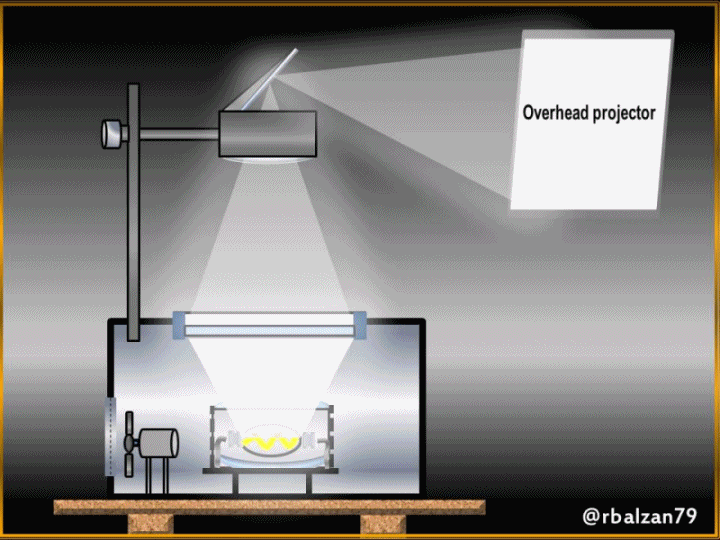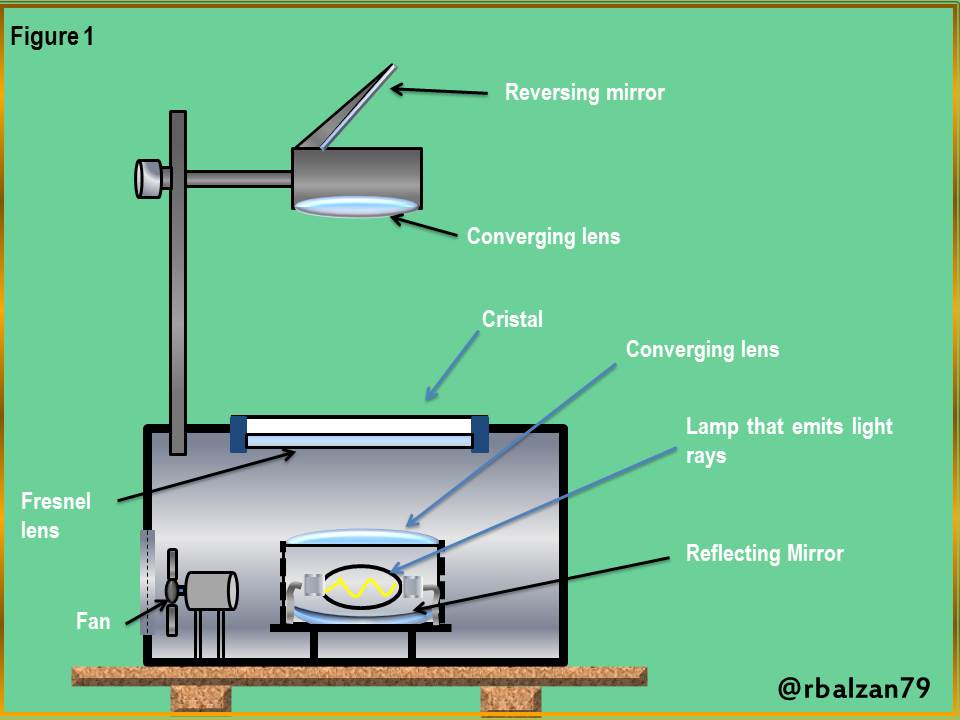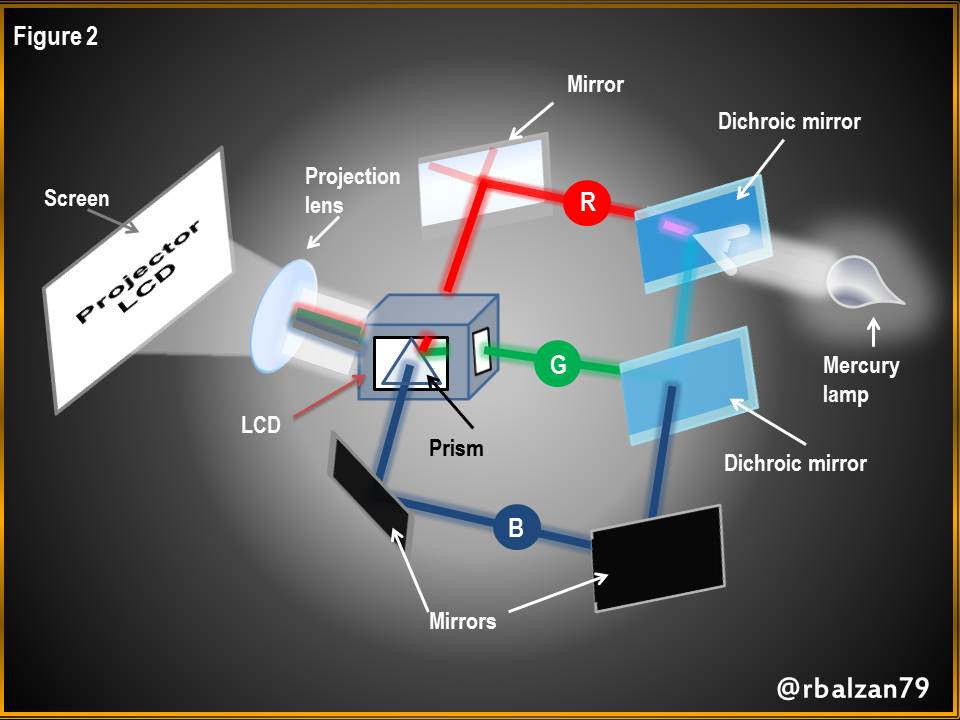Technology in the study of light / Overhead projector to the LCD Projector

Introduction
We must express that the human species has been favored with each of the technological advances that have been achieved through these last decades, and day after day we can be reliable witnesses of the above, since it would be enough to observe with our natural optical systems (eyes) around us and we would easily notice such a statement.
When man creates or designs an instrument or device it is with the purpose of implementing it to achieve a certain objective or end, this has allowed these instruments to improve over time, such and is the case of the indispensable optical instruments, and they represent physical mechanisms which manage to process light feces, usually through the implementation of mirrors, lenses and prisms, among other particular optical systems.
In this opportunity we will analyze in a general way to the optical instruments called projectors, these with the time have suffered positive changes so much in their internal structure as in the external one, and as we know thanks to the study of the light by means of the optical science and the technology, so we will know some of the characteristics related to the old projectors and the advances that have been given in them.
The Projector
We could say that any of us can know this type of optical instrument, an example of them are the cinemas, where they exhibit the most modern of these devices, but it is important to make a small tour in the evolution of the same from the old projector and its components to reach the description of the LCD projector.
The overhead projector
Perhaps the young people of today have not heard of an overhead projector, however, the not so young, where I include myself, we had the opportunity to know this type of technology, many university teachers implemented them to teach their classes, this was achieved through the use of an acetate sheet where a certain image or information.
This device managed to increase the size of the information found in the sheet described above, and in this way all of us (students) at the same time could observe what the teacher wanted, then we will know the optical elements that made possible such description, and thus the proper handling of light that allowed the projection of the desired images.
Figure 1. Parts of an overhead projector
In general terms, we can say that when the light reached the top of this device, it went through another lens, and thus reached another mirror which projected the light onto the receiving screen. On this screen, the image appeared in the same way as it was placed on the work plate, for this purpose, a lot of light intensity was required, which generated a lot of heat so an internal fan was implemented.
It is important to emphasize that with these first projectors, it was only possible to project black and white images, in addition without mobility and without sound, these last two aspects are found in the current projectors with the arrival of the digital era, and among them we can find the LCD projectors.
LCD Projector
Of this optical instrument we can say that it is made up of elements such as: a mercury lamp, five mirrors of which two are dichroic, 3 LCD panels, a prism and a lens which ends up projecting the image on a receiving screen, all these components can be seen in the following figure 2.
Figure 2. Parts of an LCD projector
From the previous figure 2, we can express that when the mercury lamp is turned on it will emit white light, this light is broken down into RGB (as seen in the previous figure) through the dichroic mirrors, with the other three reflective mirrors each beam of light is taken to its respective LCD panel (Liquid Crystal Display).
Finally, with the prism that is inside the three LCD panels we attach to the light beams in a single one (RGB light), to send it to a lens for its respective projection on a screen or receiving surface of the desired images or frames, in this way we can visualize good images, either in a static way or with movements.
Conclusion
Continuing with our interesting journey in relation to the implementation of technology in the study of the essential phenomenon of light, we were able to find the advances related to the optical instruments called projectors, in this case from the old overhead projector to the LDC projector, this last one with new optical systems that have allowed us to improve the quality of the images at the moment of their projection.
With many types of projectors we can find today, and each model with its particular technology, and also with the firm purpose of providing better quality during the projection of images, this leads us to express that since the old overhead projectors until today much progress has been made in this area, thanks to the link initially raised, science-technology.
Note: The images are of my authorship, made using the Power Point application, and the animated gifs were made with the Photoscape application.


!discovery 20
Thanks to the @discorery-it community for their valuable support and also to @phage93. Greetings.
This post was shared and voted inside the discord by the curators team of discovery-it
Join our community! hive-193212
Discovery-it is also a Witness, vote for us here
Haven't heard of overhead projector before but by gaining knowledge from your post i wish we also would have tried this in our institutions .
Greetings friend @hassanabid, by that time those of us who knew them were delighted with those very practical optical instruments for teaching. Thank you for commenting.
Hey, man, I got to use the overhead projector, and I remember in college there was a professor who used it. And with two sheets of acetate and using the blackboard I could give a class of biochemistry understanding perfectly.
This way you explain how everyone works is very easily understood.
Thanks for sharing this information friend @rbalzan79
Thank you my friend @josevas217 for commenting, that's how it is at that time that this instrument was the best for teaching. Nowadays a lot of progress has been made thanks to technology. Greetings.
Seeing the images took me back to my time in college, where that device was state of the art.
Happy memories my friend, thanks for your visit and comment @trabajosdelsiglo. Greetings.